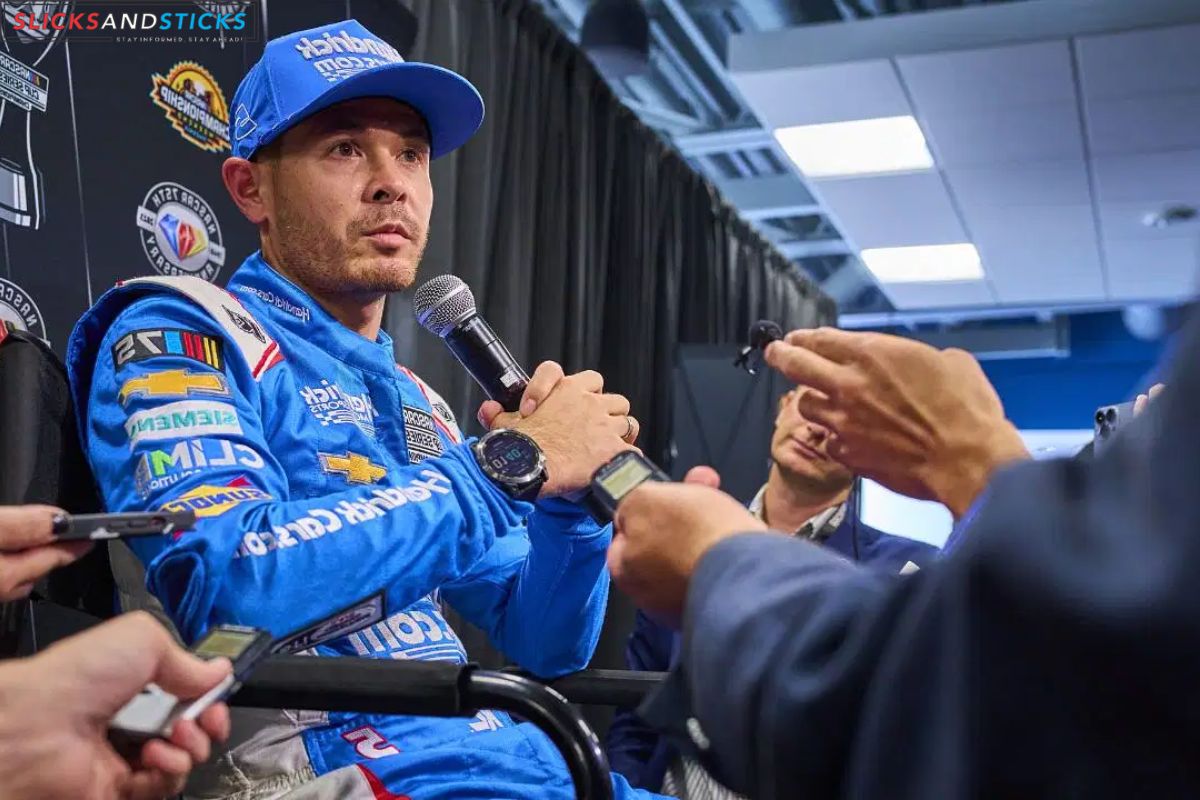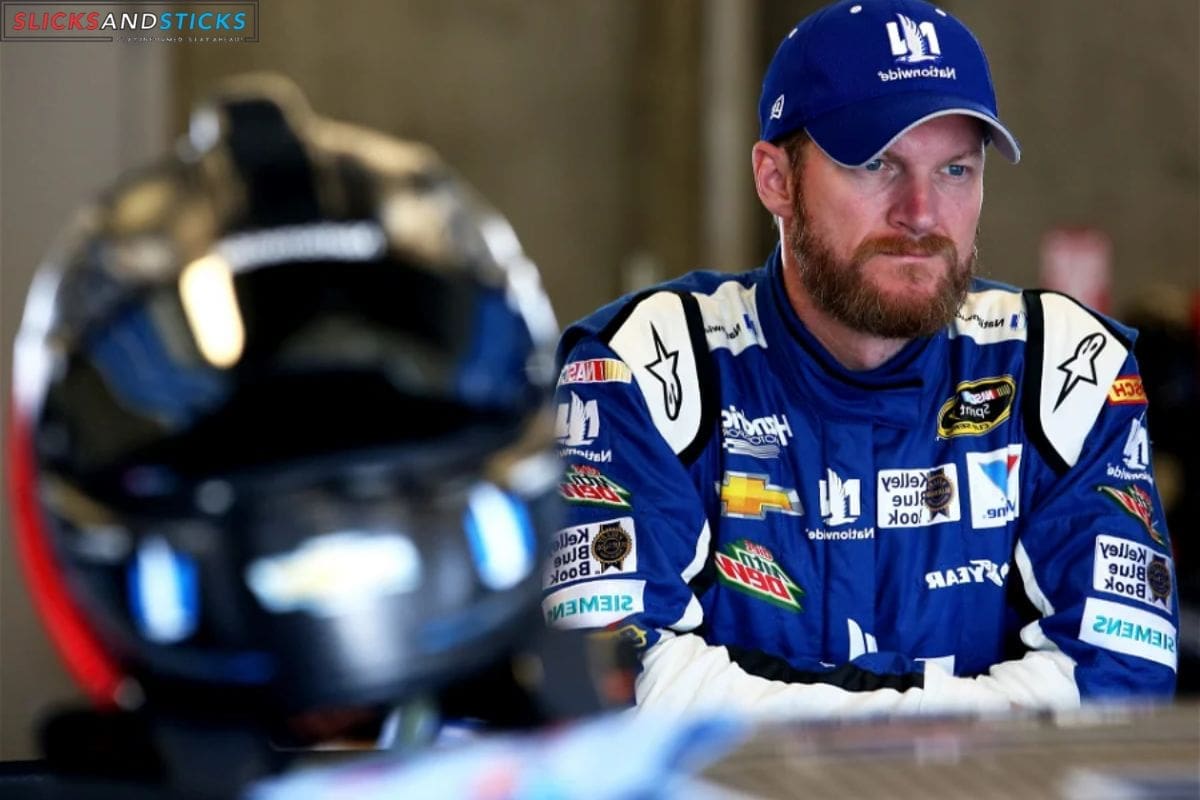Phoenix Pit Strategy: At Phoenix International Raceway, the climax of the race hinged on a decisive pit stop. As William Byron led the charge down pit road, Kyle Larson’s pit crew unleashed a masterclass in precision and speed, propelling him past both Byron and Ryan Blaney. This electrifying moment of impeccable teamwork and brisk efficiency had every NASCAR aficionado perched on the brink of their seats, convinced Larson was on the brink of seizing the 2023 finale race and the championship.
Yet, as the laps dwindled, Ryan Blaney’s tenacity and skill surged. He overtook Larson, a testament to the critical role of pit stops in the high-octane chess game of racing. Meanwhile, the Dale Earnhardt Jr. insider, dissecting the race’s final acts, stumbled upon a revelation that took them by surprise, showcasing the ever-unpredictable nature of the sport.
In the world of NASCAR, the ritual of qualifying each week sets more than just the starting gridit dictates the strategic selection of pit stalls. The pole position winner traditionally snags the prime No. 1 stall, granting them an unimpeded sprint back to the track, a subtle yet significant advantage. Subsequent top qualifiers vie for stalls near pit wall openings, offering unhindered access, a coveted asset in the race’s rhythm.
The placement of timing lines along the pit road, crucial for monitoring speeds, plays into the tactics as well. Drivers aim to time their acceleration between these lines to avoid penalties while maximizing their exit speed. For most NASCAR races, this selection process follows the established order of qualifying results.
However, in a championship showdown, the rules shift. The top four contenders are granted the privilege of the first four pit selections, irrespective of their qualifying positions. This deviation from the norm sparked a candid critique from Dale Earnhardt Jr.’s Door Bumper Clear crew member TJ Majors, who expressed his surprise and disdain for the rule: “Did you know that the Championship guys get the first four pit selections? I didn’t know that. I think that’s dumb. I think it should be the same as it always is. You qualify like crap; you should get a crap pit stop. […] I think if you qualify 15th and I think 20 was behind that, they should get the 15th/16th best stops. That’s part of it.”
In a twist of fate, it can also be speculated that Ryan Blaney‘s third-place exit from pit road and pit stall advantage might have been the stealthy advantage that clinched his ultimate victory.
At Phoenix, Ryan Blaney started 15th, while William Byron had the pole position. Yet, intriguingly, only two pit stops separated them. This begs the question: Could Blaney have managed to outpace Kyle Larson during the final laps if his pit stop had been positioned further from the prime spots?
Despite emerging from the pit road as the third of the Championship 4 on the day’s final pit stop, Blaney unleashed an impressive surge in the race’s last leg. He seized the lead from Larson with just 20 laps remaining and maintained his front-runner status to the end.
Larson secured a third-place finish, with Byron trailing into fourth, which reflected their respective second and third positions in the championship standings. In the meantime, a brake rotor failure mid-race caused a crash that dropped Christopher Bell to fourth place, ending his championship hopes.

Now, we turn the floor over to you. Do you concur with TJ Majors that pit stall assignments should adhere to the order set by qualifying, as per usual races? Or is the current system, which provides an edge to Championship 4, the better approach? Also, it’s worth noting that Ross Chastain, who started 8th, ultimately clinched the final race without any such advantage.
ALSO READ: Brad Keselowski Phoenix Dilemma: Family First or Racing Glory?
Our Reader’s Queries
Why do they call it a pit stop?
The pits are where the action happens during a race. Accessible via a pit lane that runs parallel to the start/finish straightaway, this area is where teams work on their cars. Each team typically has their own garage along the lane, where they perform maintenance and repairs in a designated pit box.
What is Phoenix Raceway reconfiguration?
As part of the plans, the track will undergo a reconfiguration. The front stretch has been widened from 52 to 62 ft (16 to 19 m), while the pit stalls have been changed from asphalt to concrete. Additionally, the dogleg (between Turn 2 and Turn 3) has been moved outward by 95 ft (29 m), resulting in a tighter turn radius of the dogleg from 800 to 500 ft (240 to 150 m).
How do NASCAR pit stops work?
During a NASCAR race, pit stops occur when drivers require more fuel, new tires, or have sustained damage. To execute a pit stop, drivers must follow the designated speed limit as they pull down pit road and come to a complete stop in their assigned pit stall. These stops are crucial for ensuring that drivers have the necessary resources to continue racing at their best.
Why are pit stops necessary?
In the world of Formula One racing, pit stops are a make-or-break moment. These brief interludes allow teams to swap out tires, refuel, and tweak the car’s settings in mere seconds. The stakes are high, as a well-executed pit stop can mean the difference between victory and defeat. Pit stops are a critical component of a team’s strategy, and they can have a profound impact on the performance and safety of the drivers and their crew.

